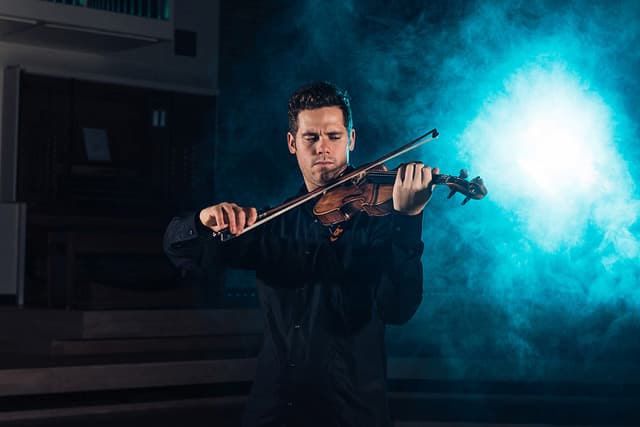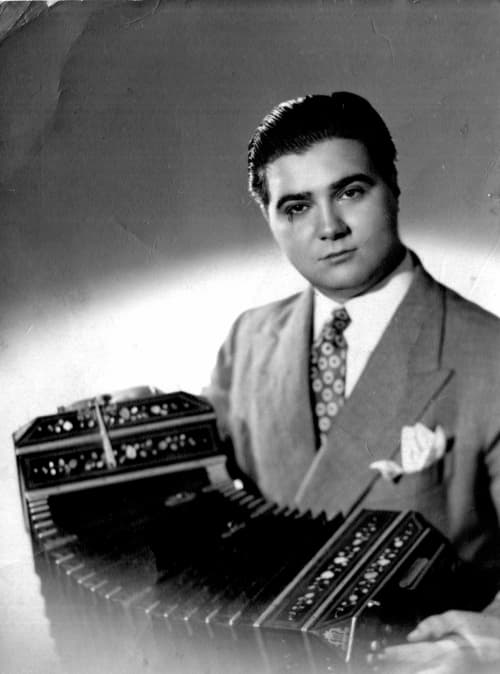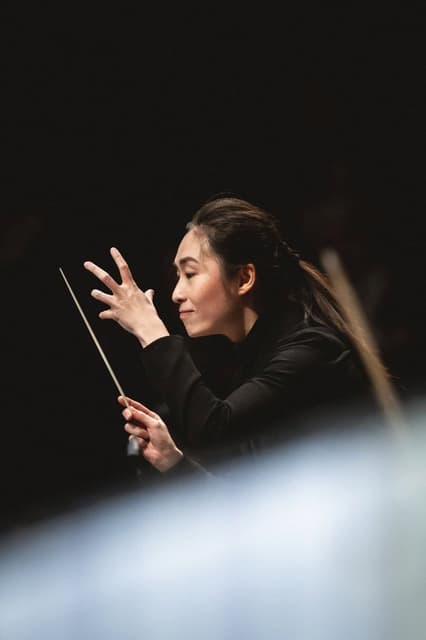Callum Smart is a renowned British violinist and professor at the Royal Northern College of Music (RNCM) and Orford Musique. As a forward-thinking educator, he recently launched Caidence, a free AI tool designed to help violinists and teachers improve their playing and teaching. In this interview, Professor Smart discusses the inspiration and development of Caidence.
Callum Smart- Bach Violin Partita No.3 in E Major, BWV 1006: I. Preludio
What inspired you to create an AI tool for violin education?

Callum Smart
I’m always exploring other industries to see what’s happening globally and to identify leading trends. AI has become a huge part of many industries, but I noticed that the classical music world has yet to fully embrace it. I wanted to be part of that change. I have a large social media following and often receive questions about violin practice and technique, which inspired me to develop an AI tool to serve my audience’s needs.
How did you come up with the name “Caidence”?
It’s a play on the musical term “cadence” combined with “AI” to highlight its artificial intelligence capabilities.
How many people are involved in the development of Caidence?
It’s mostly been a solo project, though I’ve received some guidance from experts in the business and tech industries to understand how to build and use AI. It’s been a lot of work, but I’m passionate about providing access to high-quality violin education, and Caidence furthers that mission.
What was the process of developing Caidence? How long did it take?
The development process took about six months. First, I had to solidify the idea and find the right format. I decided a conversational chatbot would be the most effective tool because violinists often have questions when they’re on their own in the practice room. Then, I built a reliable knowledge base of leading violin resources as well as my own writings on violin pedagogy. The most significant effort was the training and testing – as you can imagine, it took a lot of dedicated training before I felt confident in Caidence’s answers and comfortable recommending it to violinists. I tested the tool with my students before expanding it to about 100 pilot users for feedback. Based on their feedback, I made a few final tweaks and then publicly launched it on October 1st.
How has the response been so far?
It’s been going really well! Caidence has users from 30 countries across five continents. It’s amazing to see this global footprint, and I’m inspired and heartened to know that Caidence is helping so many violinists around the world. But this is just the beginning – I hope word will continue to spread about Caidence, and I have a lot of exciting ideas to grow and expand the tool moving forward.
What makes Caidence different from other chatbots?
The main difference between Caidence and other chatbots is that Caidence is specifically designed for violinists. If you type a question about violin into ChatGPT, for example, it will share a high-level response with information it pulls from across the Internet. There is no way of determining whether that information is accurate or whether it comes from a professional who knows what they are talking about. Caidence, however, has been trained by violinists, for violinists. It has been thoroughly vetted, and its guidance is based on leading resources that violinists can trust. Caidence will also provide more detailed, practical answers – for example, it will recommend specific etudes to overcome various technical challenges.
Do you think Caidence can replace in-person teaching?
No, I believe in-person teaching is essential – there are certain elements of violin learning that can only be offered by a physical teacher, such as correcting students’ posture and identifying where the student may have tension. Caidence is meant to supplement violin lessons, by bridging the gap between the lesson and the practice room. It’s there to help when students are practicing on their own and need guidance throughout the week. It can also be a valuable resource for teachers as they build lessons and practice plans for their students.
Can you share how Caidence works for you when you are practicing?
Caidence helps in quite a few ways, from answering general questions to offering specific advice on techniques like intonation or vibrato. It has an extensive library of repertoire lists for various skill levels and can suggest the right repertoire for your level or the proper studies to address technical challenges. It can also generate structured practice plans and provide background information on pieces – for example, I recently used Caidence to provide information about a recital programme I was performing in Hong Kong. Additionally, Caidence users receive access to a video tutorial library, so those who work better visually can see technical demonstrations.
Caidence is a free browser-based tool now available: https://www.callumsmart.com/caidence/
For more of the best in classical music, sign up for our E-Newsletter




